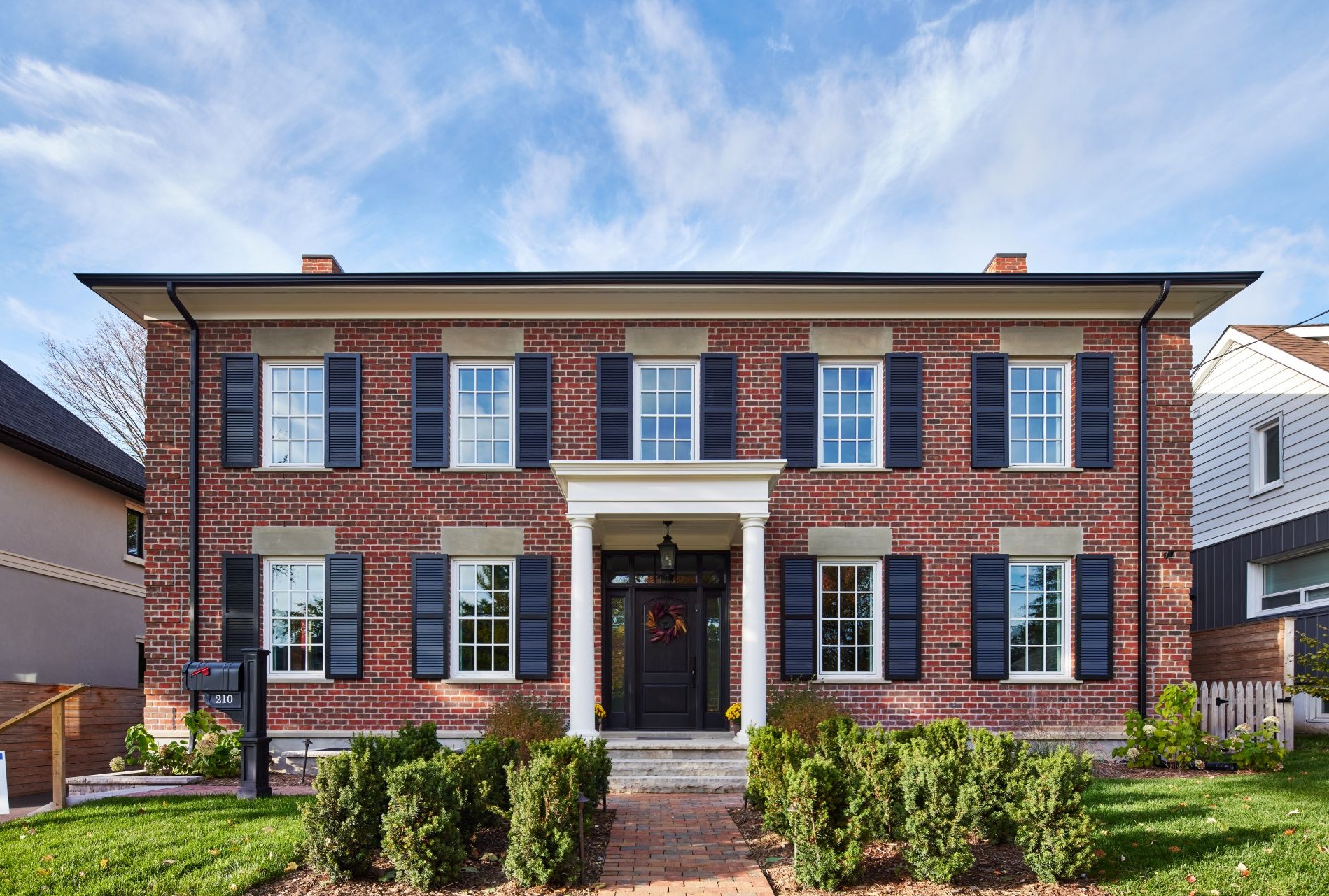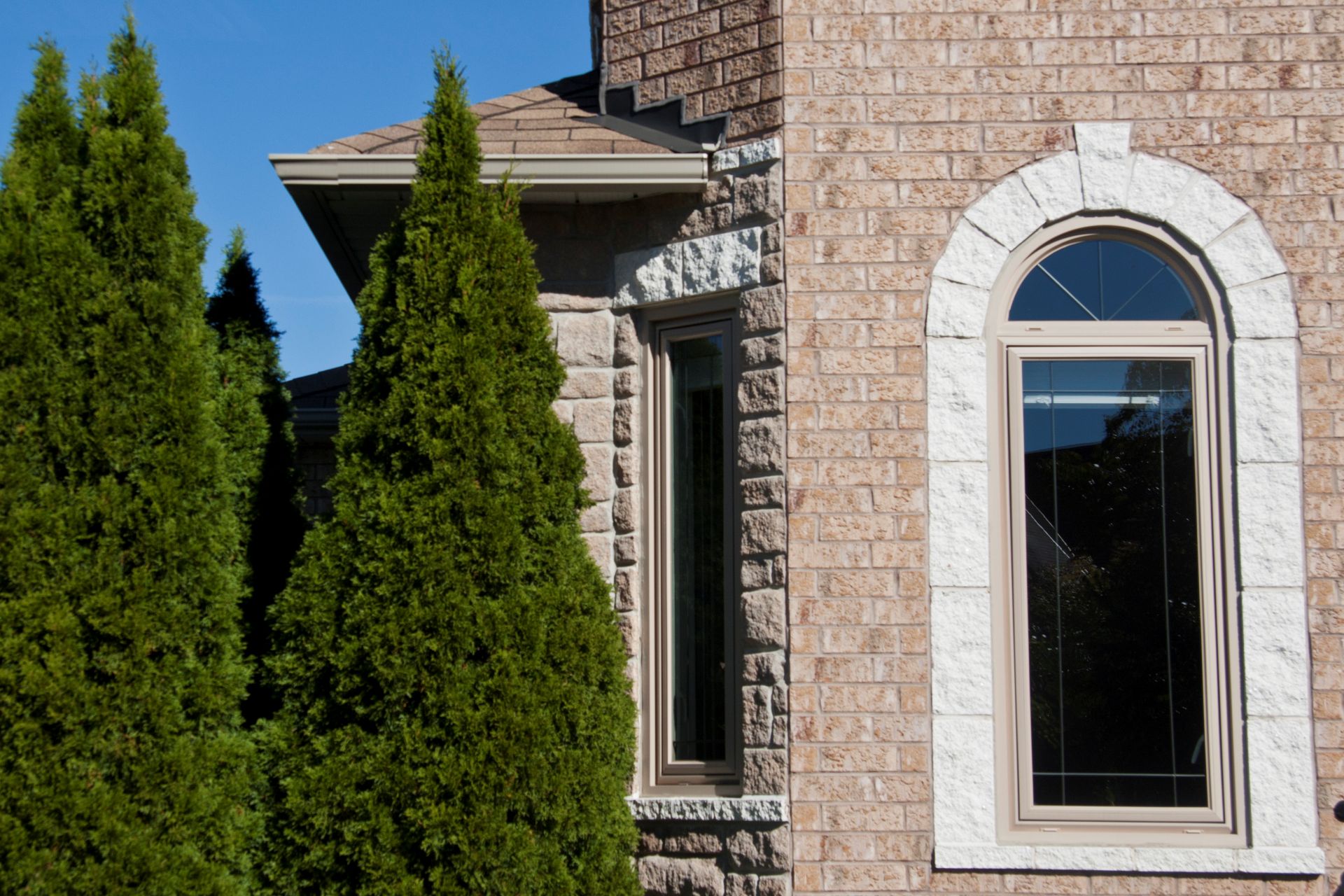
Window Parts, Materials & Components
What Is A Window Lintel? A Complete Guide!
When thinking about your windows, you might focus on energy efficiency, aesthetics, and ease of use, which are all extremely important. However, have you ever considered what holds up the wall above them? That critical component is the window lintel, a structural support that bears the weight above your window and ensures the wall stays strong and stable.
This is why it's of the essence to understand how lintels work, what they're made of, and how to spot signs of failure that can save you from major structural issues down the road. Therefore, if you want to learn more about window lintels, we've prepared a complete guide with all the details!
Key Takeaways
- Window lintels support the masonry above windows and prevent cracking, sagging, and frame distortion. Without a functioning lintel, even a brand-new window can quickly become compromised.
- Steel, concrete, timber, stone, and brick lintels have unique advantages and vulnerabilities. It's important to know what your window lintel is made of, as it can help plan proper maintenance or repair.
- Cracks, rust stains, bowing bricks, and hard-to-open windows can all signal a lintel problem. Make sure to check your window lintels regularly to spot problems early on.
- Lintel problems require structural expertise, proper materials, and precise installation to restore integrity and appearance.
What Is A Window Lintel?

A window lintel is a structural support installed above a window. Its primary role is to bear the weight of the masonry or brickwork above.
Therefore, lintels prevent windows from bearing structural weight, thus avoiding deformation and damage. These horizontal structures are crucial for distributing loads and ensuring the wall and the window remain intact and free of stress-related issues.
Conversely, a malfunctioning lintel can cause the masonry above windows and doors to crack or break, leading to major structural issues.
In some cases, window lintels are also elements of decoration for windows, doors, and the entire wall.
Common Materials Used in Window Lintels
Various materials can be used for window lintels, each with its own advantages and disadvantages, which we'll discuss below!
Steel Lintels
Steel lintels are among the most common. They have a high load-bearing capacity, are durable and long-lasting, can span wide openings, and are resistant to rot and pests. However, steel is susceptible to corrosion if not properly protected and can be quite expensive compared to other materials.
Concrete Lintels

Concrete lintels are strong and reliable and fire-resistant and can be reinforced with steel for added strength. On the other hand, concrete lintels are quite heavy and can be difficult to install. They can also crack if not properly installed and are less flexible in terms of size compared to steel lintels.
Timber Lintels
Timber lintels are easy to work with and install, aesthetically pleasing, and durable. But they are also susceptible to rot, termites, and moisture damage, which is why you won't see wooden lintels on too many modern houses. In addition, they are not suitable for large spans or heavy loads because of their lower load-bearing capacity.
Stone Lintels

Stone lintels, though less common in modern builds, are sometimes used for their aesthetic appeal and durability in specific architectural styles. However, stone lintels can crack or bend under pressure and are quite difficult to install.
Brick Lintels

Brick lintels are only installed above small windows, typically less than 1 meter wide. This is because bricks can only support light loads. In the case of larger openings, you can opt for brick lintels reinforced with steel. Brick lintels often serve for decorative purposes as well.
How to Identify a Window Lintel
Identifying a window lintel is quite straightforward when you know what to look for. Typically, you can spot a lintel by looking for visible signs such as metal strips above the window frame.
In buildings with exposed brick or masonry, the lintel might be more apparent, especially if it contrasts with the surrounding material.
However, in rendered buildings, lintels might be hidden from view, so you'll likely find it difficult to identify them. In such cases, you might need to look for subtle clues like slight bulges or differences in texture where the lintel should be installed.
Do Arched Windows Need Lintels?
Arched windows generally do not require a lintel since the arch’s geometry provides sufficient support.
However, a padstone (a large stone or block placed strategically to support and distribute a structure's weight) may be necessary at the springing point of the arch to transfer the load effectively.
This alternative support method ensures that the arch remains stable and can bear the weight of the masonry above.
Do Bay Windows Need Lintels?
Bay windows do need lintels, but they are not usually installed directly above the window. Bay window lintels are installed in line with the wall. This is because the load is carried by the main wall, not by the projecting bay window frame.
In the case of two-story bay windows, there will be two lintels: one supporting the first-floor joists or trimmers, and the second one supporting the roof structure.
Signs of Lintel Failure
It's of utmost importance to regularly check your window lintels for signs of failure. Otherwise, malfunctioning brick or masonry lintels can cause serious structural issues that will affect your entire home. As such, here's what you should be on the lookout for.
Cracks Above the Window
When the lintel begins to fail, it can no longer properly support the weight of the wall above the door or window. As a result, the load gets redistributed in ways the wall isn't designed to handle. This extra stress shows up as cracks radiating diagonally or horizontally from the top corners of the window.
Sagging or Bowing Brickwork
If the window lintel fails, it will bow downwards. While it remains supported at the ends, the center drops. This movement causes the brickwork above the ends to experience compression and inward movement, which changes how weight is distributed and leads to cracks and other issues.
Separation From the Frame
When a lintel loses its strength or shifts out of place, it can pull away from the window or door frame, leaving a visible gap. This gap means that the lintel is no longer tightly supporting the wall. The separation allows movement, which can let in moisture and pests, and may further destabilize the wall.
Visible Rust
Steel lintels are particularly vulnerable to rust. As these lintels rust, they expand, sometimes up to seven times their original thickness. This expansion puts pressure on the surrounding masonry and causes cracks, bulging, and even displacement of bricks. Rust can stain the surrounding brickwork, so you may be able to spot it in time.
Crumbled Mortar or Masonry
When a lintel fails, the shifting and uneven load can cause the mortar around the lintel to crumble or break apart. This happens because the movement puts stress on the mortar joints, which are not designed to handle those forces.
Difficulty in Opening Windows or Doors
A failing lintel can cause the wall and the window frame to shift or distort. This movement may result in the window or door frame becoming compressed, twisted, or misaligned. As a result, you might find it hard to open and close the window or door. If the problem persists even after adjusting the frame, it's likely that the underlying issue is with the lintel, not the window or door itself.
What Causes a Lintel to Fail?

Lintels can fail because of various reasons, among which these are the most common:
- Steel lintels usually fail because of corrosion from moisture. As steel rusts, it expands, which can cause cracks or displacement. This is especially common if the steel lintel is ungalvanized or if protective coatings are damaged. Steel lintels installed in wet or coastal areas are at a higher risk of failing.
- Concrete lintels can fail if the steel reinforcement within them rusts. This happens if moisture penetrates the concrete, reaching the steel bars. Concrete lintels may also fail because of poor installation or design or structural movement.
- Timber lintels most often fail because of rot and wood-boring beetles.
- Stone lintels usually fail because of cracking from structural movement. Moreover, they can also fail because of weathering if water collects in cracks and then freezes and expands.
Regardless of what type of window lintels you have, all of them can deteriorate over time because of natural wear and tear.
Furthermore, if you replace your timber windows with new windows - lighter vinyl windows, for instance - the lintels will have to bear more load. This is because timber windows may have been partially load-bearing, so the lintels may not be able to support the entire weight by themselves.
And let's not forget about improper installation - window lintels need to be sized correctly and installed properly to perform at their best.
Window Lintel Repair or Replacement
Repairing window lintels is a job best left to qualified professionals, as it often involves structural work, specialized techniques, and safety considerations. Here’s how experts typically address lintel problems:
- Inspection. A structural engineer or specialist contractor will first assess the extent and cause of the lintel failure. This may involve checking for cracks, movement, corrosion, or decay and determining if there are underlying structural issues, such as water ingress, that must also be addressed.
- Identifying lintel type. The repair method depends on whether the lintel is steel, concrete, timber, stone, or brick.
- Common professional repair techniques. The experts may proceed with reinforcement with helical bars (steel rods), pinning and anchoring, or full lintel replacement.
- Additional professional practices. In some cases, the specialists may have to strengthen the wall above the opening through specialized techniques. They will also have to restore the masonry to match the original appearance after repairing or replacing the lintel.
Ultimately, it's extremely important to seek professional help if you notice any issues with your window lintels. After all, lintels significantly affect the load-bearing capacity of a wall, and it's of the essence to repair them properly. Moreover, professionals can identify and address other underlying issues.
How Much Does Window Lintel Repair Cost?
Basic lintel repairs typically cost between $300 and $700 for windows. Door lintel repairs are slightly more expensive. If we're talking about extensive repairs that require structural reinforcement or partial replacement, the price can reach $1,500 or more.
Replacing a window lintel costs, on average, $2,500, depending on the lintel size and material. However, in the case of large or complex projects, the price can reach $5,000 for one window lintel.
Moreover, labor costs range between $45 and $70 per hour.
Window Lintel Maintenance

Regular window lintel maintenance is essential for preserving the structural integrity of your home and preventing costly repairs. Use this checklist to keep your lintels in good condition:
- Test window and door operation regularly. If they become hard to open or close, it could indicate lintel movement.
- Do a quick check after heavy rain or freezing temperatures, as these can speed up lintel damage.
- Look for diagonal cracks at window corners, sagging or bowing brickwork above windows, gaps between the lintel and surrounding bricks, and rust or flaking on metal lintels.
- Check for signs of water ingress. Moisture getting into the wall cavity near the lintel can lead to rust or rot. Look out for peeling paint or damp patches around the interior window reveals.
- Keep weep holes clear. These small holes (usually above the window in cavity walls) allow water to escape. If they’re blocked, trapped moisture can damage lintels, especially steel or timber.
- Ensure proper drainage and flashing. Faulty or missing window flashing can direct water into the lintel areas. Gutters and downspouts should direct water away from windows.
- Avoid DIY fixes. Temporary solutions like caulking over cracks or repainting rusty lintels may mask the problem and delay proper repair. If you spot any warning signs, call a structural engineer or qualified contractor for a professional assessment.
Let Magic Do the Heavy Lifting - Quite Literally!
If you've noticed cracks above or around your windows or they're hard to open and close, don't wait! At Magic, we don't just replace windows - we perfect the entire system around them!
Our innovative window and door technologies are engineered for maximum performance, and our expert installation teams ensure that structural issues like lintel failure are correctly identified and professionally resolved. This means your windows will look great, function flawlessly, and last longer!
Contact Magic today for a free consultation and discover the difference that innovation, experience, and precision can make!
Frequently Asked Questions
Do you need a lintel above every window?
Most windows require a lintel above them to support the weight of the wall and structure above. The lintel ensures stability and prevents damage to the frame and the overall structure. In some older buildings or in cases where the frame itself is structurally robust, a lintel might not be present. However, modern building regulations typically require one for safety and compliance.
What is the difference between a lintel and a sill?
A lintel is a horizontal structural element installed above a window or door opening to support and distribute the load from above. A sill is the horizontal part at the bottom of the window or door, providing a base for the frame and helping shed water away from the building.
How serious is lintel failure?
Lintel failure is a significant structural issue that can lead to cracks, sagging, or even partial wall collapse if not addressed. It poses safety risks and potentially causes secondary damage to the building.
What is the difference between a soffit and a lintel?
A lintel is a structural element installed above a door or window to support the load above. A soffit refers to the visible underside of any architectural element, such as the underside of a roof overhang, arch, or balcony. A soffit is not a load-bearing component.
What are the common signs that the lintel is failing?
Common signs indicating that the window lintel is failing include noticeable cracks or bulges in the walls around window openings, sagging or bowed lintels, and issues with opening or closing windows and doors. Addressing these signs promptly is crucial to prevent further structural damage.